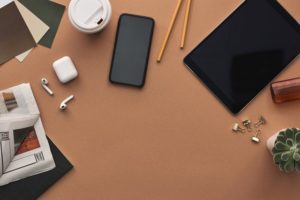
Projecting capacitive is one of the world’s leading touchscreen technologies. Like its surface capacitive counterpart, it leverages a uniform electrostatic field to detect touch commands. All capacitive touchscreens produce a uniform electrostatic field, which they monitor while looking for changes. When you perform a touch command, your finger will distort the electrostatic field. The capacitive touchscreen will notice this distortion, and it will respond by registering a touch event.
There are different types of capacitive touchscreens, however, one of which is projected. Projective capacitive touchscreens allow for a higher level of accuracy and responsiveness than nearly all other types of capacitive touchscreens. With projected capacitive touchscreens, many individual keys touch keys are created. Projected capacitive touchscreens can essentially pinpoint the exact area of touch commands more accurately because of their keys. With that said, they must be etched during production to achieve this goal.
What Is Etching in Projected Capacitive Touchscreens?
The term “etching” refers to the process of adding conductive material to a substrate, such as the display layer of a touchscreen. Projective capacitive touchscreens require etching in order for them to identify and respond to touch commands. All projected, as well as surface, capacitive touchscreens measure a uniform electrostatic field. With etching, conductive material is used to ensure that the uniform electrostatic field travels across the display layer.
One vs Two Etched Layers
Most projected capacitive touchscreens are made of either one or two etched layers. Some of them feature a single layer of conductive material. This etched layer may contain thousands of individual electrodes, which are arranged in a grid-like pattern. Other projected capacitive touchscreens, however, feature two etched layers.
If a projected capacitive touchscreen features two etched layers, they will usually have opposing electrodes. One of the layers will feature rows of electrodes, whereas the other layer will feature columns of electrodes. When both layers are placed together, the electrodes combine to form a grid-like pattern — similar to that of a single etched layer.
How Etching Works
The purpose of etching is to allow projected capacitive touchscreens to determine where touch commands occur. When you perform a touch command, your finger will distort the electrostatic field in that area. This distortion can only occur, though, with the use of electrodes. Electrodes allow the electrostatic field to change when exposed to a conductive object, such as a bare finger.
Some projected capacitive touchscreens have a single etched layer, whereas others have two etched layers. Regardless, they all are made with etching.
